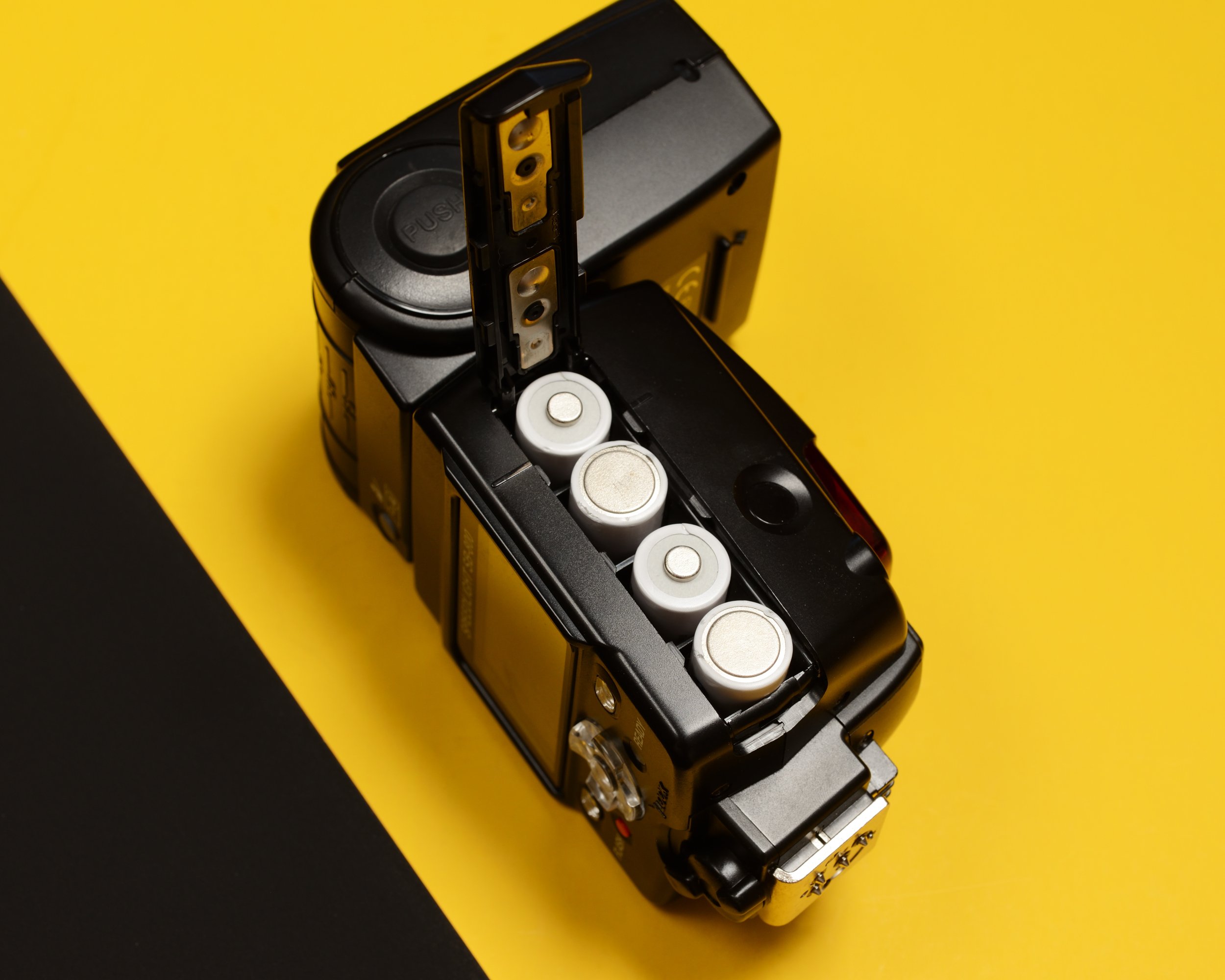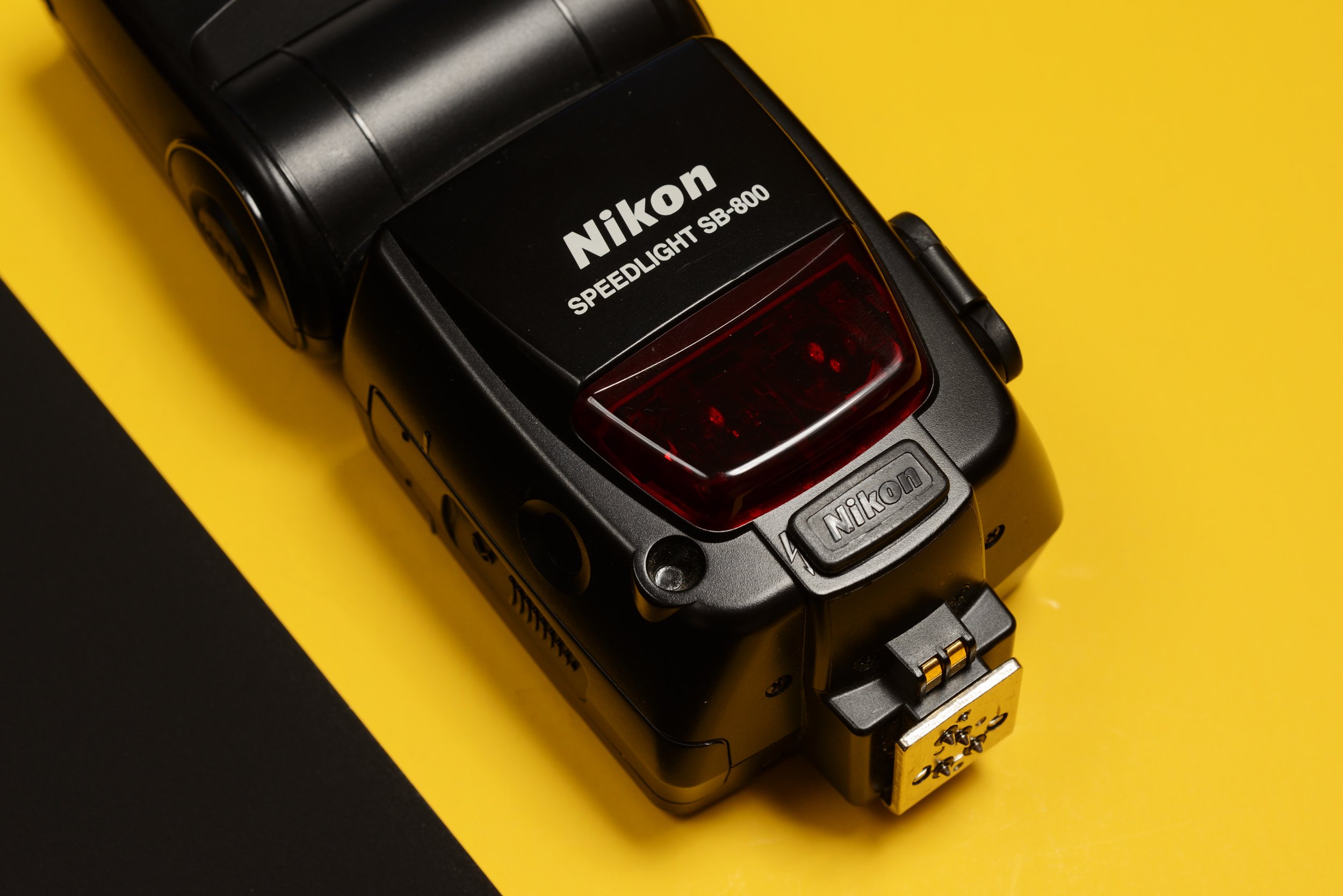Nikon SB-800 Autofocus Speedlight
Nikon SB-800 Autofocus Speedlight
Introduction
Over the years, I’ve worked with various flashes of many different brands.
The Nikon SB-800 truly stands out among them. With an unbeatable price-performance ratio this professional model introduced in 2003 offers great user experience, excellent technical performance and broad compatibility
16 years after its release, I bought my first SB-800 second hand. And I was quite astonished by how Nikon conceptualized products back then.
Review
User Experience and Build Quality
Can a mundane tool like a flash gun even offer a compelling user experience? The Nikon SB-800 can and does.
First, it is notable that Nikon included everything one needs in the package.
Nikon SB-800 with accessories.
The SB-800 came with a SW-10H diffuser, flash stand, two color filters (one for tungsten, one for fluorescent light) in a plastic box and the AS-19 flash stand, which also has a tripod screw on the bottom.
The SB-800 and all these accessories fit in the included nylon pouch which has cleverly designed compartments for all of the pieces.
Nikon SB-800 and accessories stored inside the original nylon pouch.
The flash itself is of very good build quality. The buttons feel extremely sturdy and responsive at the same time. There are also clever details like the bounce card containing a cheat sheet with button shortcuts.
Nikon SB-800 battery compartment.
Usually the SB-800 uses 4x AA batteries, but with the SD-800 a fifth AA battery is added.
Nikon SB-800 display.
The back display is a very easily readable LCD with a green back light. It provides useful information like the current effective flash distance.
What I really appreciate is the small size of the unit compared to newer models.
All in all, this is just very good product design.
Technical Performance
Flash Output
Although small and compact, the Nikon SB-800 is very powerful with a guide number of 38 at 35mm / ISO 100. For example, at f/5.6 and ISO 100 the effective flash distance is 6.7m.
The unit has no overheating protection, meaning you can fire it until the flash bulb literally blows up.
Recycling times with fresh batteries good, especially with the 5th battery in the SD-800.
Modes
The Nikon SB-800 does it all: TTL, manual, front- and rear curtain synchronization, red eye reduction and focal plane synchronization, which allows the use of high shutter speeds are the most important ones.
Practical Tip: Flash Value Lock
One of the most useful features of the SB-800 is the flash value lock available with iTTL compatible cameras. On my D800, I’ve assigned the front function button to this function. When engaging flash value lock, the SB-800 fires a measuring flash to determine the correct flash output. When taking a series of shots with changing compositions, the exposure will remain the same thanks to the flash value lock. One can even change the aperture and the flash output will follow accordingly, as long as flash value lock remains engaged.
Wireless
The SB-800 can also be triggered wirelessly with an on-camera flash, thanks to an integrated optical sensor. The output can be adjusted manually in camera or can also be calculated automatically by Nikon’s Creative Lighting System (CLS). This works really well in practice.
Other Features
Focus assist light and a zoom-able flash head with a range from 24mm to 105mm round out the feature set.
Nikon SB-800 on Nikon AS-19 with extended bounce card (custom settings shortcuts printed on the back).
Compatibility
What makes the Nikon SB-800 such a versatile flash is its compatibility, which can be divided in three groups.
Group 1 - Full functionality is guaranteed with all iTTL-capable Nikon cameras. This means that every Nikon released from 2003 to now, from the Nikon F6 and D2x over the D800 to the Z-system is fully compatible with the SB-800.
Group 2 - TTL works with every other Nikon released before 2003 back to the F3 and FM3A.
Group 3 - All earlier Nikon bodies as well as any other camera digital and analog are also compatible with the Nikon SB-800, thanks to its integrated light sensor. ISO and aperture are set in the flash unit and it then calculates the exposure effortlessly.
Many modern flashes lack such a light sensor as a cost saving measure, making them useless for most film cameras.
Nikon SB-800 autofocus assist light and light sensor.
Conclusion
Only two other flash units by Nikon offer the same feature set as the SB-800, and those are the SB-900 and SB-910. Compared to the SB-800, they offer an updated control scheme and a larger flash head, but are also significantly bigger and heavier and more expensive on the used market.
The Nikon SB-800 still is one of the best flashes one can buy.







